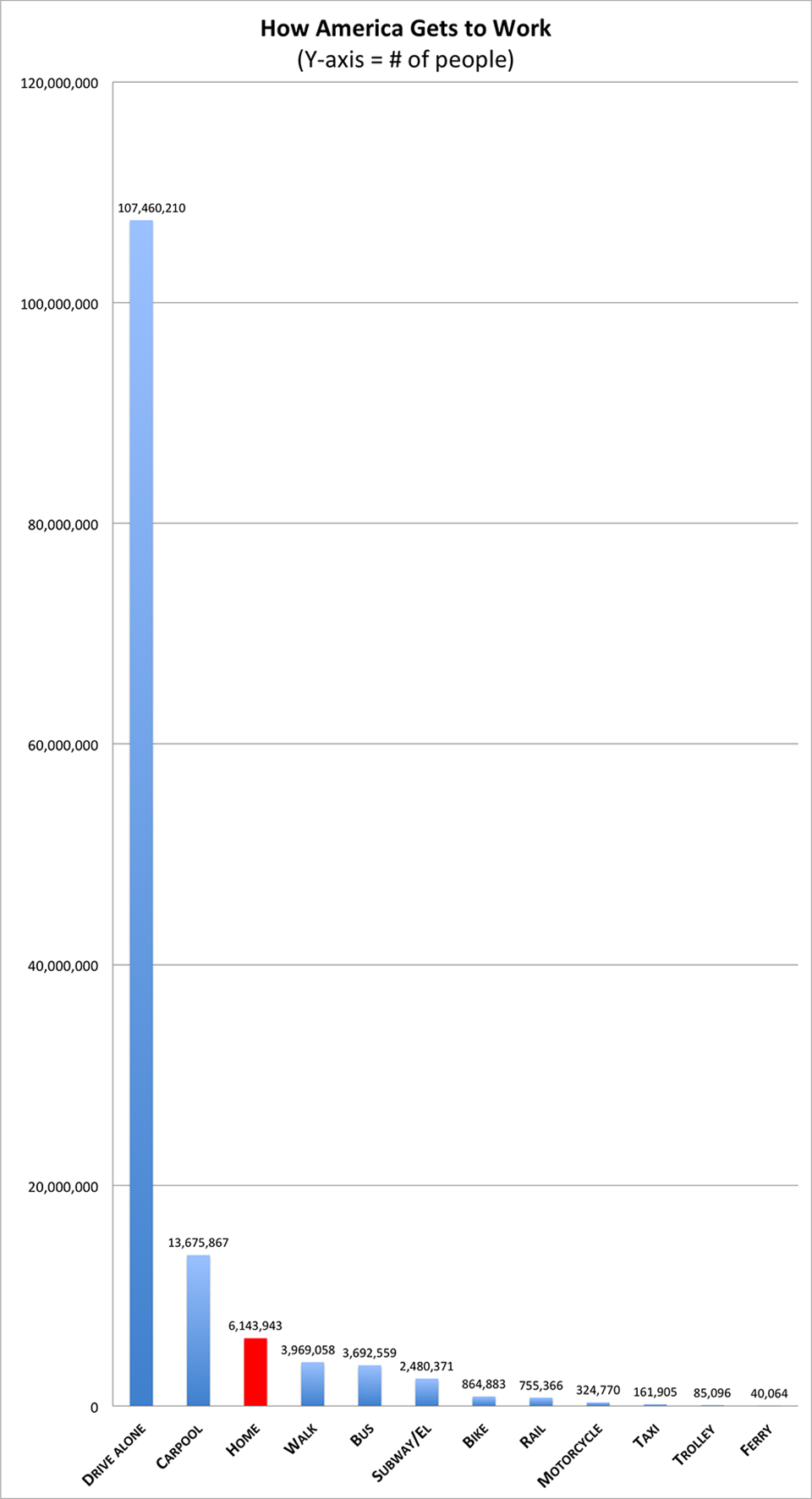

The problem is not too many single-occupant drivers. It's the design of the cars that they are driving.
They are carrying with them four or more empty seats, taking up an entire lane instead of half of one. Until now, the right tool for the job of commuting on freeways has not existed. Motorcycles, despite their advantages through traffic, have not even reached a 0.2% share of the commuter market due to their drawbacks.
The fact is: People who can afford cars will use them, despite the inconvenience of traffic congestion. The vast majority of workers want the freedom to go where they want to go, when they want to go, and to be able to transport and secure things in their personal locker.
Lane capacity can be increased from 2,000 vehicles per hour (VPH) to 4,520 VPH according to a Booz-Allen-Hamilton / University of California, Berkeley study funded by the California Department of Transportation (CalTrans). See these reports on our downloads page.
Note in the chart below that over the last 28 years, single occupant drivers have increased from 76.3% of all workers to 76.4%. Carpooling despite roughly $250-billion of expenditure for HOV (carpool) lanes, has decreased by 25% over the same time period from 11.8% to only 8.9% of all workers.



“The significant problems we face cannot be solved by the same level of thinking that created them.”
“The formulation of the problem is often more essential than its solution, which may be
merely a matter of mathematical or experimental skill.”
“If I had an hour to solve a problem I'd spend 55 minutes thinking about the problem and 5
minutes thinking about solutions.”
― Albert Einstein
New Zealand Site
Australian Site